This week, while trying to identify prints in our collection that showed dghasa, a beautiful little craft native to Malta, I stumbled across a really interesting watercolor painted by Nicolas Cammillieri. The artwork is titled “H.M. Sloop Parthian Capturing a Spanish Pirate.” The computer record didn’t contain any information about the event depicted but I figured there must be an interesting story behind the artwork–and I was right!
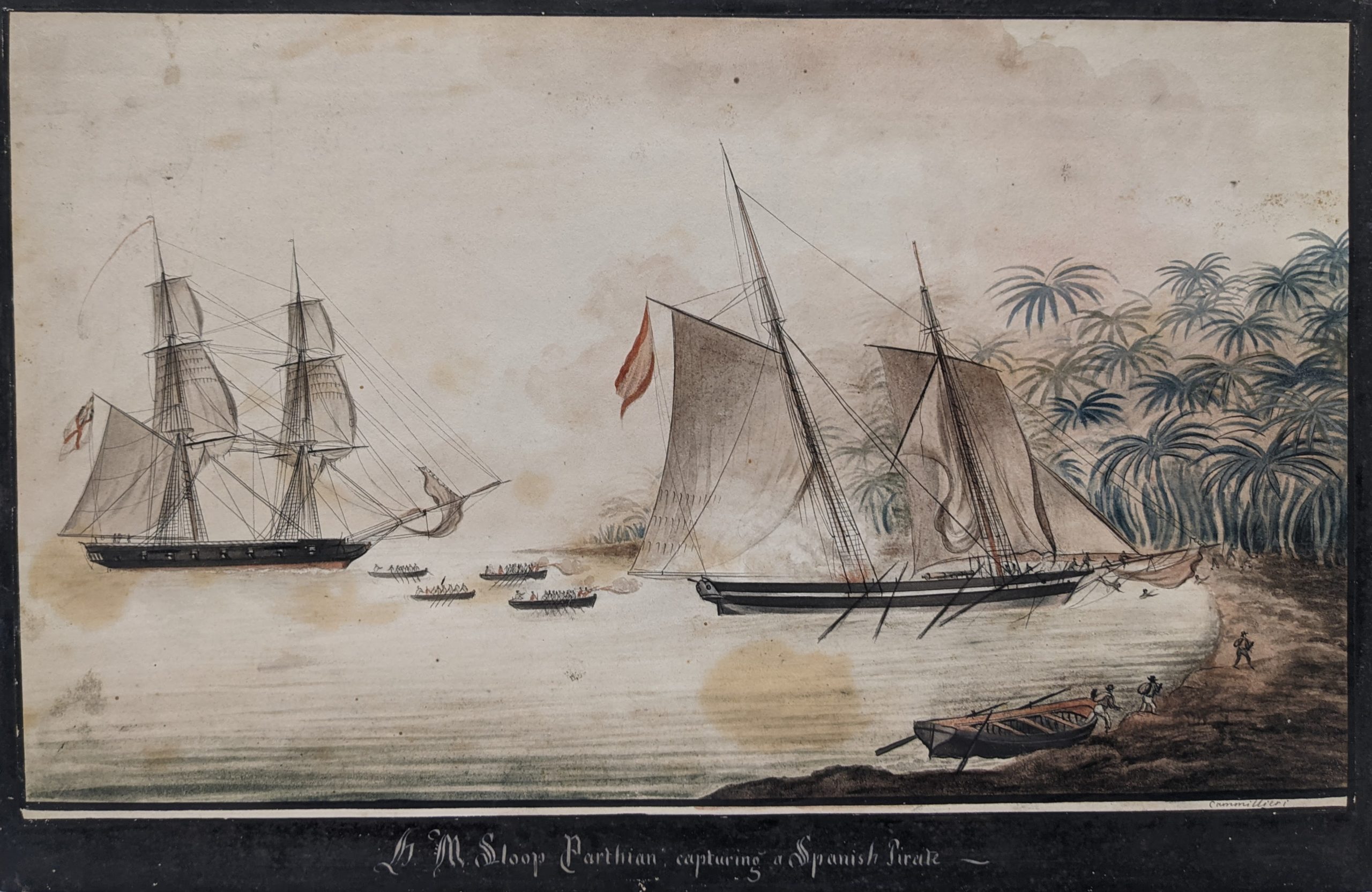
It all started when Lloyd’s List reported that on May 15, 1824 two British merchant vessels, the brig Pilgrim of Greenock, captained by J. Wilson1 with twelve crew, and the barque Shannon, captained by 31-year-old Isaac Peart with sixteen crew, had sailed together from Campeche, Mexico for Bristol and Cork but neither had arrived at their destination. They were believed to have foundered in the Atlantic Ocean with the loss of all hands.
The crew of the launch Caron then reported that a few days after the two merchant ships left Campeche Shannon had been captured by the Spanish schooner San José2 in seven fathoms of water in the Bay of Campeche near the Laguna de Términos. The schooner was owned by Señor Molas of Yalafar (Yalahau in Yucatan) and was under the command of Juan el Valenciano. Her second in command was a man known only by the name “Ramon with the cut face”–which should automatically trigger the thought “uh-oh…pirates.” San José had a crew of thirty-six and was armed with one 8-pound long gun, two smaller guns, and forty muskets and blunderbusses.
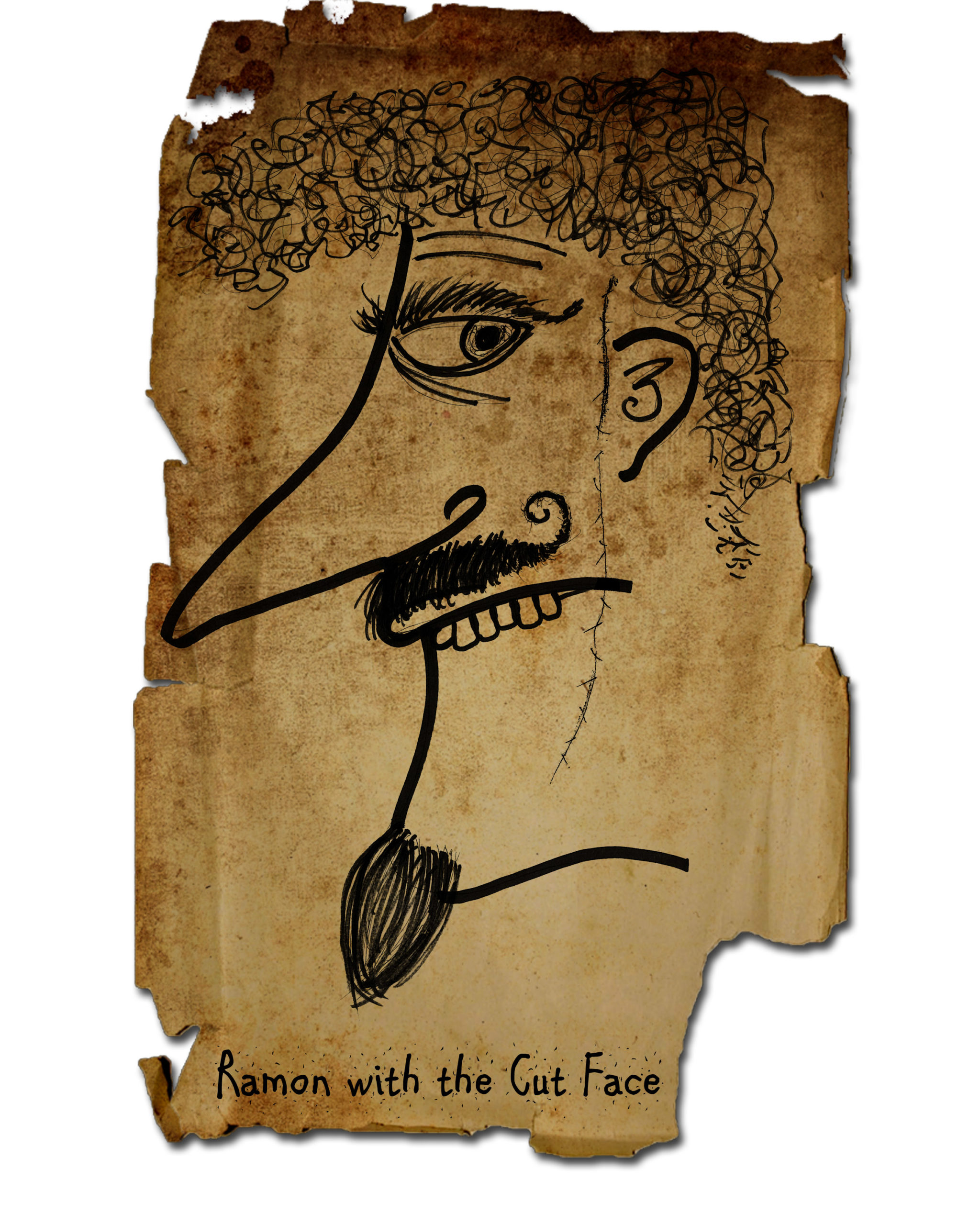
One of the Caron’s crew was told by the pirates that they had boarded Shannon, killed the crew and cut off Captain Peart’s head and stuck it on a pole on the shore. Valenciano was even seen wearing Captain Peart’s white hat and trousers. The pirates moved the crew’s trunks, bedding, stores and other items ashore and shifted the vessel’s guns, tackle, and other equipment into the San José before setting Shannon on fire.
On June 16th, HMS Parthian3, commanded by The Honorable George Barrington, arrived in Campeche with dispatches from England. When Barrington was informed that a pirate schooner was somewhere on the coast between Campeche and Veracruz and that she had recently taken at least one English merchant ship and murdered the crew “in a most inhumane manner” he immediately sailed in pursuit of the pirate vessel.
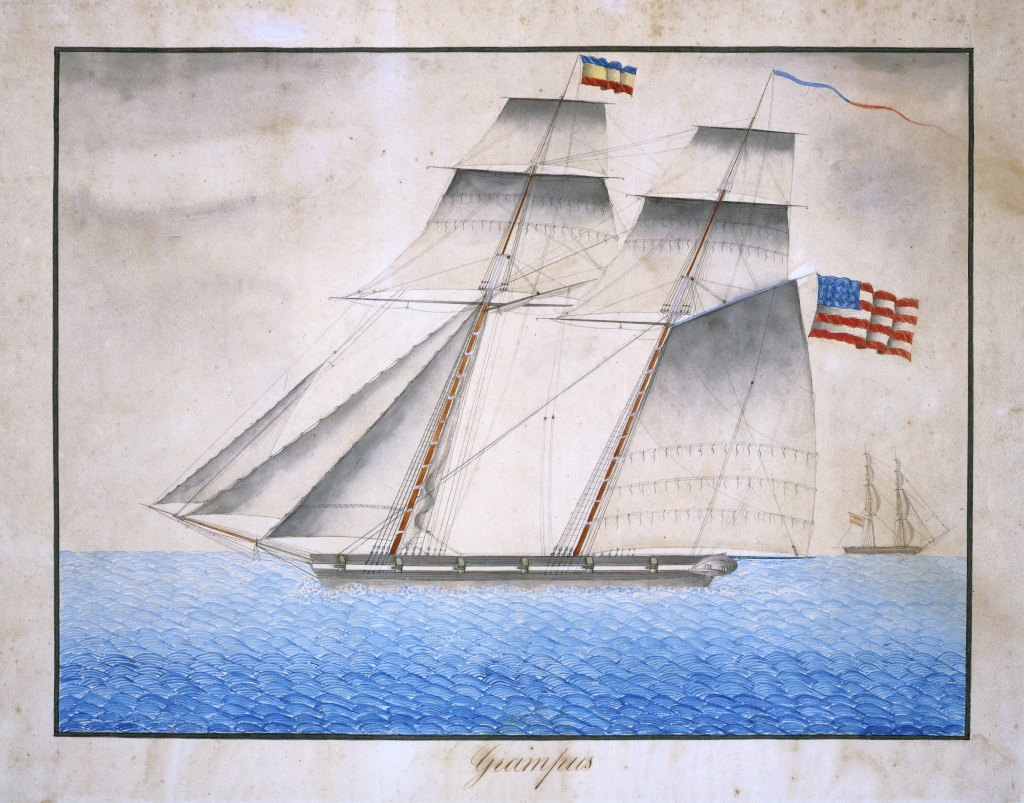
To draw the attention of the pirates Barrington sailed Parthian as close to shore as was safely possible. The vessel grounded once, but was quickly refloated without sustaining any damage. At dawn on June 18th while off the coast of Tabasco a schooner under full sail and matching the description of San José was found to be following Parthian, presumably mistaking her for a defenseless merchantman and therefore a good prize. The crew of Parthian did their best to disguise the vessel as a merchant brig and even slowed the ship down by towing the end of a chain cable and a hawser with a pair of trawl-head irons fastened to it behind the vessel.
The pirate schooner came within two miles of Parthian before the crew realized their mistake and immediately headed for land. As the breeze was light, Parthian crowded on all sail while the pirates used large sweeps in an effort to increase their speed and outrun the pursuing British brig. If the artwork is to be believed, the pirates may have also raised a square sail on the foremast–a sail most pilot schooners didn’t normally carry, but San José had lots of spare sails on board thanks to all of the vessels they had plundered!
After a five hour chase Parthian came within firing range. Realizing there was no escape, Valenciano ran San José on shore. Barrington anchored Parthian in just two-and-a-half fathoms (about 15 feet) of water and sent the ship’s boats filled with armed sailors and marines after the fleeing pirates. The boats were commanded by midshipman Thomas Pownall Pellew Barrow and passed midshipman John Bradley.
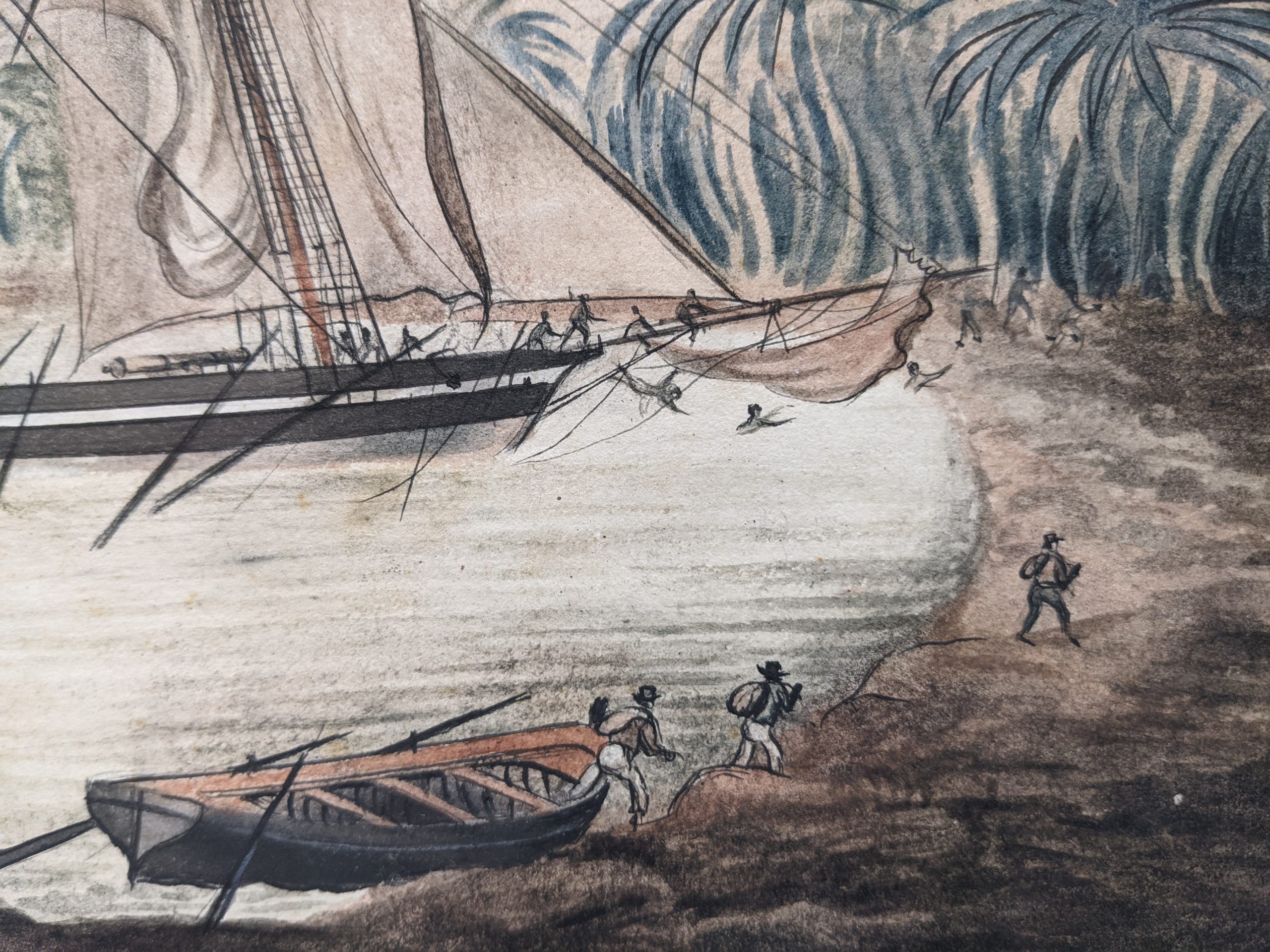
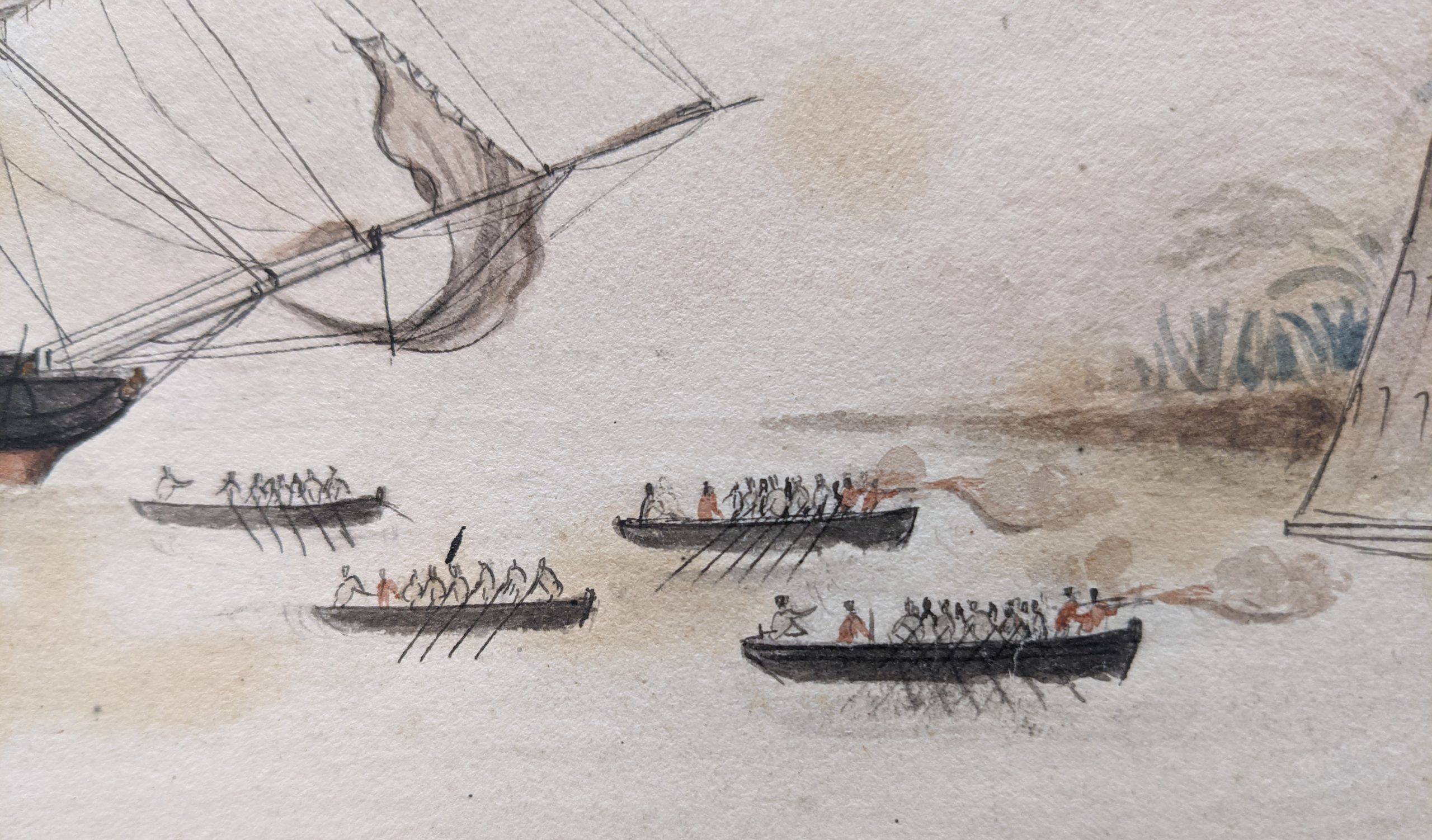
The pirates attempted to destroy San José by setting her on fire before escaping to shore with as much booty as they could carry. Some of Parthian’s sailors boarded San José, extinguished the fire before it reached the magazine and refloated her while others went ashore in search of the pirates. Parthian’s crew found substantial evidence on board the San José to confirm that both Shannon and Pilgrim had been taken. They found a list of Shannon’s crew, a pilot certificate and letter bag belonging to the brig Pilgrim, several flags, sextants, spy-glasses, a quantity of clothing including shirts with Captain Wilson’s initials on them, and a telescope with “Peart” engraved upon it.
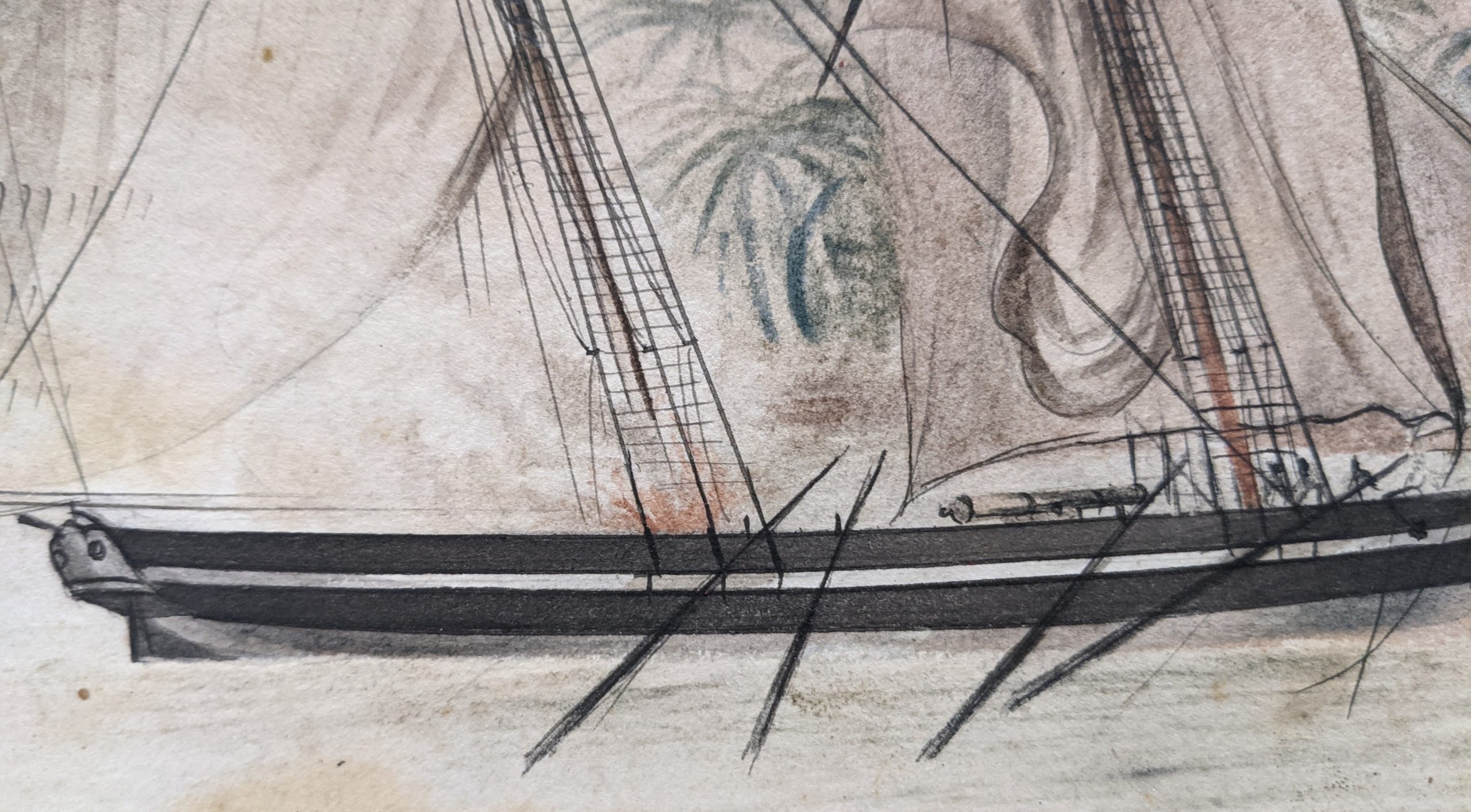
Parthian and San José sailed to Veracruz where Captain Barrington commissioned the former pirate vessel as a man of war tasked with protecting trade along the coast of Mexico. Passed midshipman John Bradley was appointed as acting Lieutenant to command her. It seems apt that the pirate schooner now chased pirates! On July 20th, after making several more captures of piratical vessels4, Parthian sailed from Veracruz for Plymouth, England.
Sadly, piracy in the Gulf of Mexico and Bay of Campeche still presents a big problem for mariners and oil platforms. If you’re interested in learning more about modern piracy in this area there is a great video available on YouTube. Pirates in the Gulf of Mexico
Footnotes:
1 This was J. Wilson’s first voyage as master.
2 Articles published at the time of the attack list the vessel name as St. José. A much later publication indicates the name was San José. Although I would normally use the name published in articles close to the date of the event, the British had a tendency of replacing “San” with “St.” so I am using the name I believe is more appropriate.
3 Parthian was a Cherokee-class brig sloop built in 1808 by William Barnard of Deptford, London.
4 Parthian captured small pirate schooners off Sacrificios on June 28th and off Sisal on June 30th.